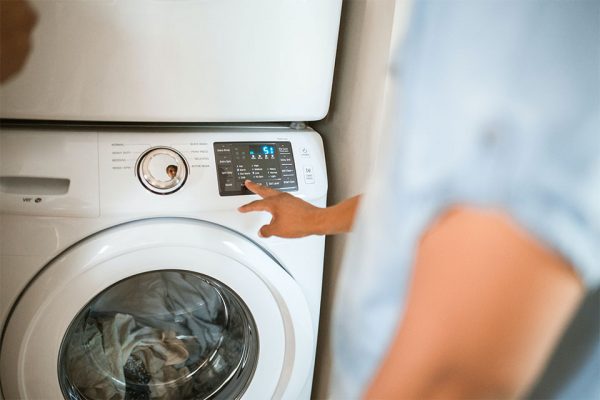
Valves are a very common component in many house appliances that use water or any other kind of liquid. That being said, there are quite a lot of different types of valves that work in different situations. The topic of this article will be the valves used in washing machines. These valves are called check valves. They are also called one-way valves as they only allow fluids to flow in one direction without coming back. We are going to cover the most important information about check valves such as how they work, different types, and more.
How Do Valves Work?
As we already mentioned, check valves only allow liquids to go one way. The main reason for this is to stop any backflow that might happen in the system. They are a great solution as they are very effective as well as cheap. Stopping backflow is very important as potentially contaminated liquids can cause serious problems if they manage to get to the upstream media.

Additionally, there are check valves of different designs, sizes, and even materials. This way they are insured to work with different appliances. The most commonly used check valves are so-called two-way check valves. Furthermore, there are also three-way check valves that use vents.
The Cracking Pressure
In order for a liquid to pass through the valve, a minimum upstream pressure is required. This pressure represents a difference between the inlet and outlet. The cracking pressure of a valve represents the minimum pressure on the upstream which allows the valve to open. Depending on the design of the valve and its size, the cracking pressure will vary. Because of this, it is important that you ensure that the cracking pressure can be met depending on the check valve that is being used.
The Closing
In the situation where the pressure in the upstream drops under the necessary cracking pressure or if there happens to be back pressure, then the check valve is going to close. In general, these valves have a diaphragm, ball, disc, or gate which is pressing the seal in order to close the valve. The closing can also be assisted with a spring or simply gravity.
Orientation During Installation
With check valves having different flow directions, for example, a one-way valve, it is crucial that you install the valve correctly with proper orientation. In general, there will be an arrow on the valve which will show you the direction of the flow. If, by chance, there is no arrow to indicate the flow, make sure that you inspect the valve to make sure it is installed correctly. Installing it the wrong way will not let the liquid pass through which will in turn make the pressure build up and potentially cause some major damage.
Normally Open and Closed Valves
The difference between normally open and normally closed check valves is that with the open valve, the liquid can pass through freely, but in case of backflow it will shut off. On the other hand, a normally closed valve does not allow the liquid to pass through freely. It will only do so when the cracking pressure builds up so the valve can open.
Different Types of Check Valves
Depending on the design of the valve, they serve different purposes. The one that is most common is the spring-loaded check valve. We are going to talk about spring-loaded check valves and several others.
Spring-Loaded In-Line Check Valves
These valves have a simple design and are quite easy to understand. There are arrows that show the direction of the flow. When the flow gets to the input port, the pressure should be high enough to overcome the spring force and its cracking pressure. When there is enough pressure, the disc is pushed back allowing for the liquid to flow through. On the other hand, when there is not enough pressure, the lack of pressure will spring and push the disc so the valve is sealed.

Spring-loaded in-line check valve open (left) and closed (right). The working components are the valve body (A), disc (B), spring (C), and guide (D).
Spring-Loaded Y-Check Valves
Y-check valves are similar to in-line check valves. The main difference between the two is that with the Y-check valve, the spring and the disc are placed at an angle creating the y shape. They work the same way as the in-line check valves.
Ball Check Valves
As the name suggests, ball check valves use either a spring-loaded ball or a free-floating one that is used for sealing.

Spring loaded ball check valve in the open position allowing flow (A), and in the closed position preventing backflow (B)
It is designed so that the ball in the valve is guided into the seat which then creates a positive seal that stops the reverse flow. So, when the cracking pressure is exceeded, then the ball is moved from the seat and the flow can begin.
SUBSCRIBE FOR MORE! HERE’S WHY:
1. You get 7 free books
2. You get the best money & productivity articles
3. You get the latest updates – all in one email per week
You have Successfully Subscribed!
